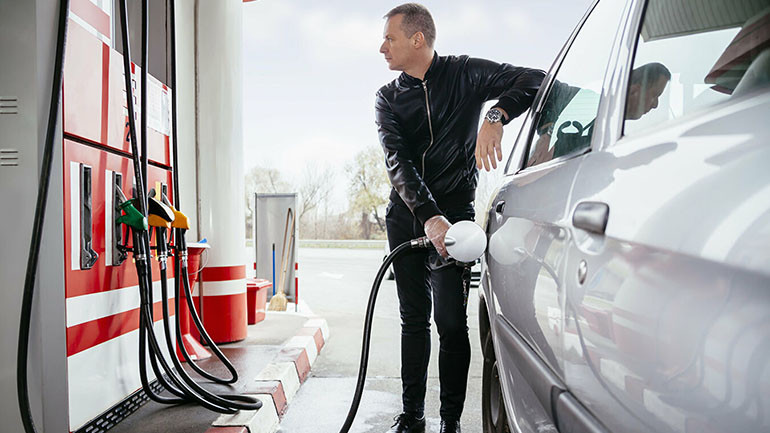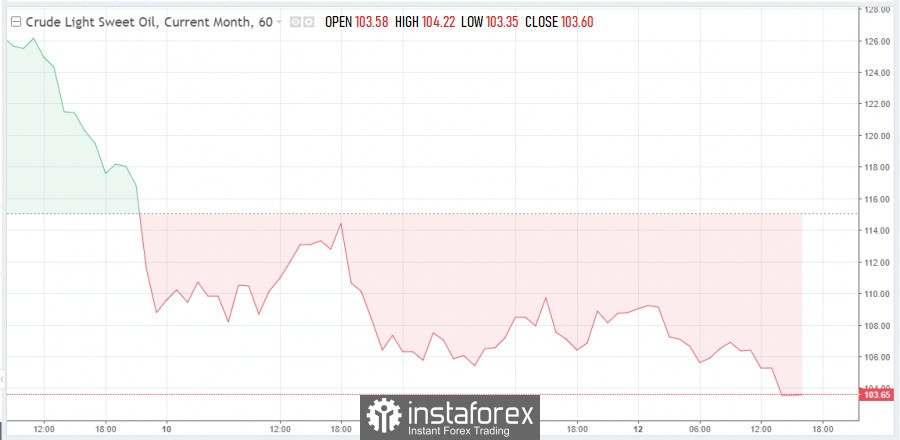

April gas futures in Europe at the beginning of Monday's trading decreased in price by about 15%, by the time this review was prepared, being below $1,300 per 1 thousand cubic meters. Recall that the estimated price at the end of trading on Friday was at $1,479.
Against the background of the military operation in Ukraine and unprecedented European sanctions measures against Russia, the cost of gas in the EU countries has been at the stage of extreme volatility in recent days. As soon as Russian President Vladimir Putin signed decrees on February 21 recognizing the sovereignty of the Donetsk and Luhansk People's Republics, and on February 24, Russian military equipment crossed the border with Ukraine under the slogans of "demilitarization and denazification" of the country, the cost of energy resources supplied from Russia to Europe soared.
In fairness, it should be noted that a noticeable increase in gas prices in European countries occurred in the spring of last year, when the average spot price on the TTF hub index rose to a hitherto unprecedented $250-300 per thousand cubic meters. At the end of August 2021, the price of the contract with the delivery "a day ahead" soared twice – to the level of $600. At the beginning of October, the market was stunned by gas quotes of as much as $1,000.
As we can see, the decision of European politicians to keep up with the latest global trends regarding the rejection of any goods from Russia is clearly not in the hands of ordinary European consumers. Fuel prices in Germany have recently been updating daily highs. But it is also interesting that not only the cost of fuel itself, but also the entire structure is undergoing changes. Judge for yourself: diesel fuel in Germany has traditionally been cheaper than gasoline, but now it is not so.
The market's concern for the supply chain of the main energy resources has generated a high price not only for gas, but also for oil. For example, today the reference grade of black gold is somewhat cheaper relative to recent highs, but it is estimated at a fairly high level - about $110.5 per barrel. The probability that the cost will continue to grow is quite high. Some experts do not deny that the price may rise above $140 per barrel. To predict in which direction and by how much the cost will change, today no one can. It is this unpredictability that pushes prices up.
At the same time, experts are in no hurry to reassure European consumers and are increasingly saying that if the war continues, the probability of seeing 3 euros for 1 liter of fuel at German gas stations will become a harsh reality. To date, in some areas of Germany, the price of a liter of fuel has risen to a record 2.20 euros.
Due to high fuel prices, other spheres are collapsing like a house of cards. Thus, the Association of small and medium-sized businesses of Germany announced the threat of mass bankruptcy of enterprises. There is one reason – the record cost of gasoline. The managing director of the association, Markus Jerger, called unacceptable the cost of gasoline above 2 euros per liter and doubled gas prices. To solve this problem, he suggested that politicians finally reduce the electricity tax to a minimum, as well as change the system of benefits for using public transport.
In fairness, it should be said that, although the German government advocates the termination of energy supplies from Russia to the detriment of the purse of its own citizens, it is still trying to solve the problem that has arisen. In order to smooth out the price shock, German Finance Minister Christian Lindner told the citizens of his country that the government is going to introduce discounts on gasoline. According to the new plan, drivers will receive a fixed discount when paying at gas stations, and this missing amount will be reimbursed to gas station operators by the government. The goal of German politicians is clear: not to bring motorists to anger and rallies, controlling the cost of a liter of gasoline in the range of up to 2 euros.
But this is not only in Germany. The Italian association of cargo carriers TrasportoUnito announced the termination of the work of truckers from March 14. The official announcement of the trade union says that they simply cannot fulfill their contractual obligations at a loss. They can be understood, because now in Italy, fuel prices, after some recent stabilization, are creeping up again unrestrainedly, confidently breaking through the psychologically important mark of 2 euros per liter on the eve of last weekend. In other words, at such prices, a tank of fuel will cost the average Italian more than 110 euros.
It is clear that with such a swing in value, it is difficult not to express your indignation at the policy of the authorities. For example, in the field of maritime transport, they no longer want to hush up a serious problem: in Italian ports, seiners and small ferries with banners "No money for fuel" can be seen more and more often.
The beginning of the energy crisis, which has been worrying Europeans with high fuel and electricity bills since last spring, is explained by experts by the fact that in the post-pandemic period, liquefied natural gas (LNG) began to be in demand in Asia, despite the fact that the main suppliers of this raw material for various reasons limited supply. As a result, the level of occupancy of European underground storage facilities after the long cold winter and hot summer of 2021 remained at an extremely low level. It should be noted that such persistently high prices in the energy sector have not been observed in the entire history of the operation of gas hubs in Europe, namely since 1996.
